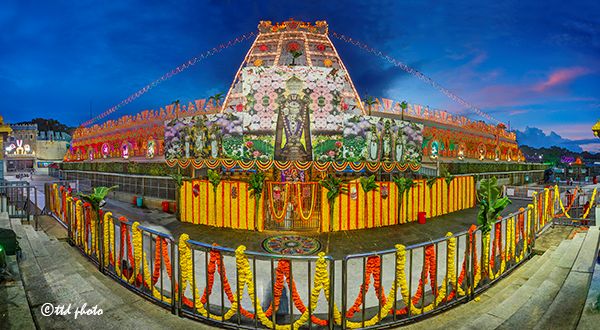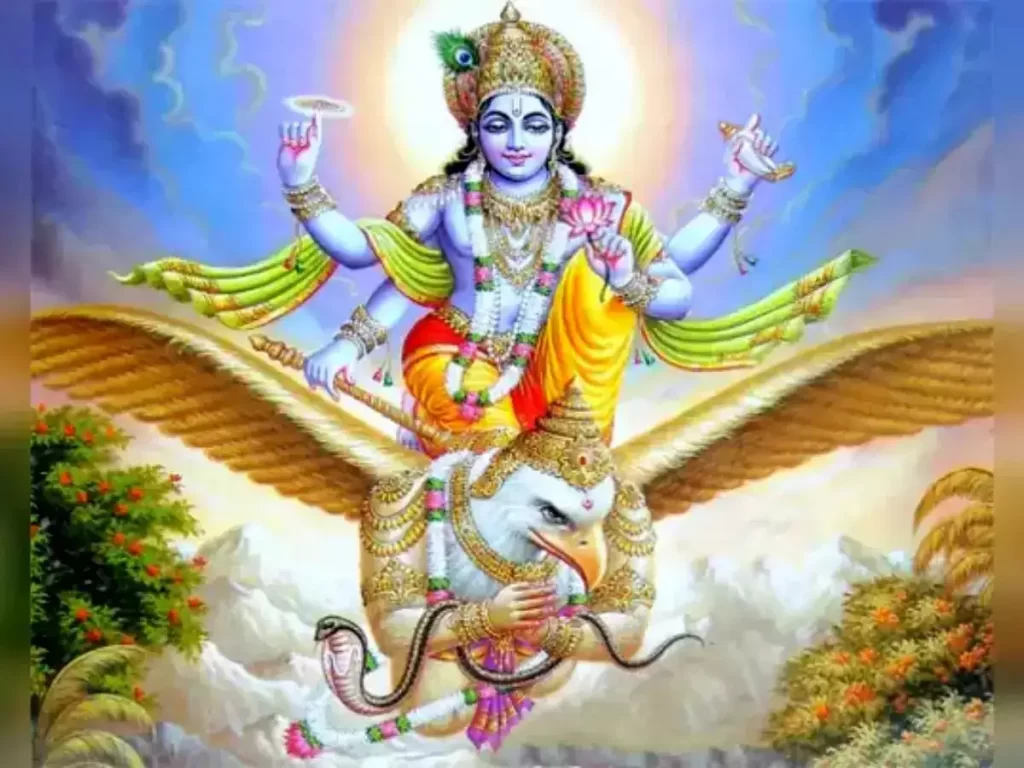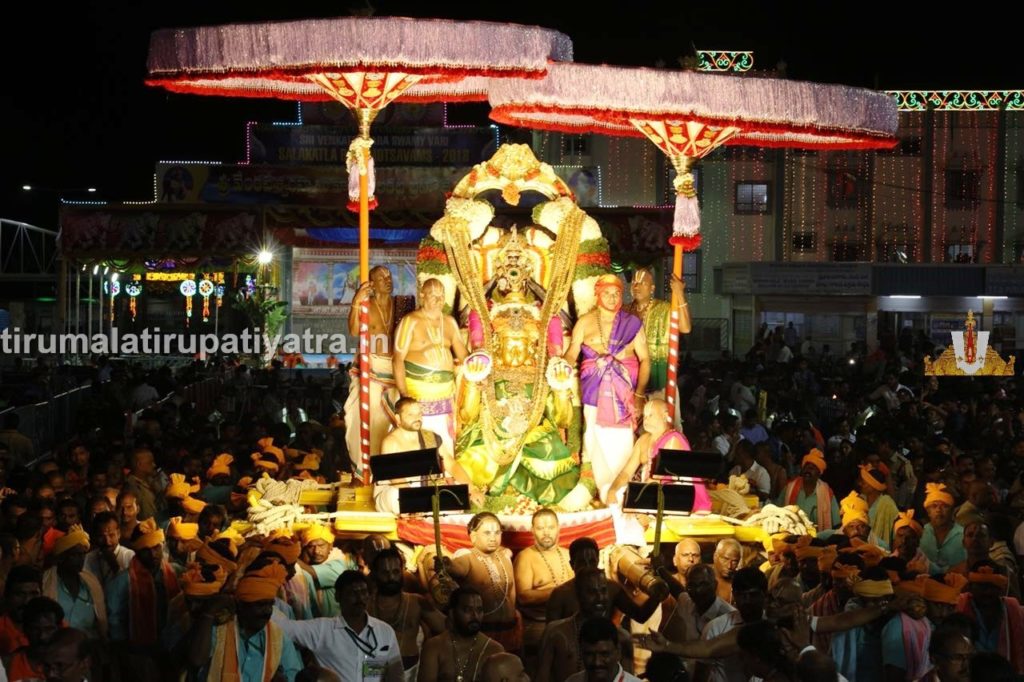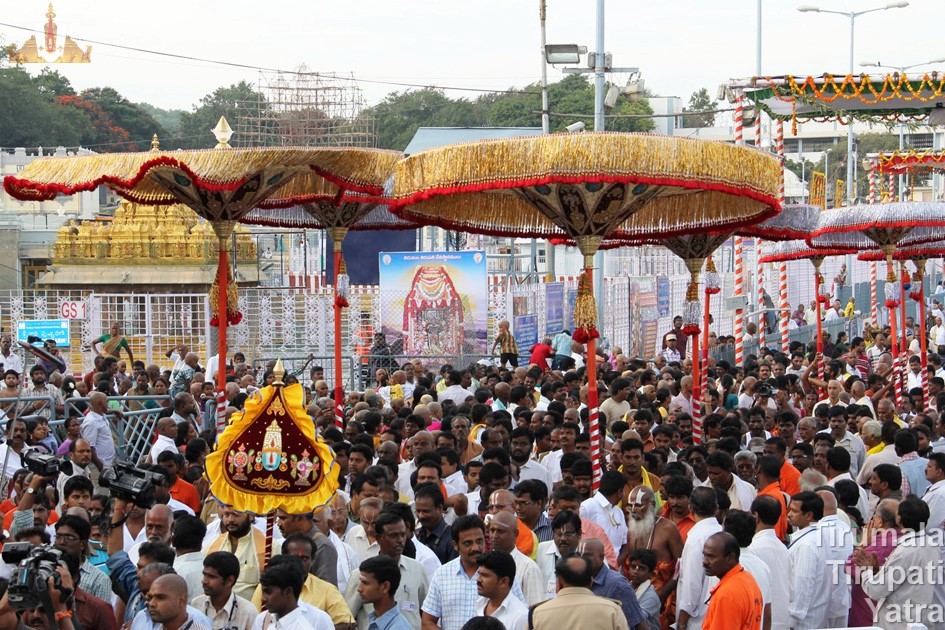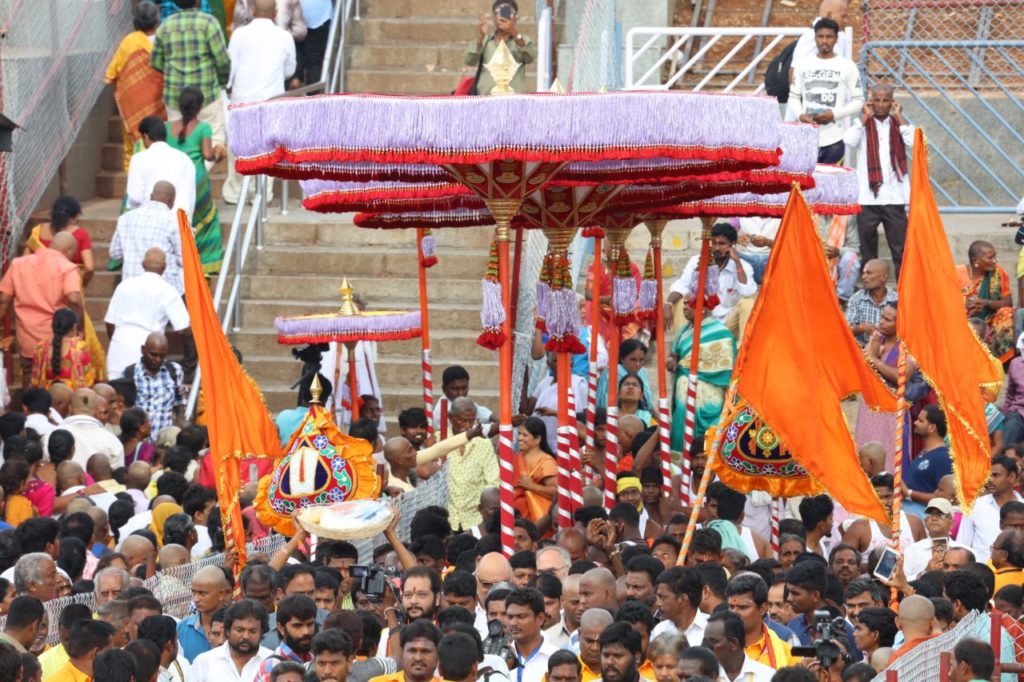Schedule of Sri Vari Pournami Garuda Seva 2025 TTD has been conducting Garuda Seva in Tirumala on the full moon day of every month for the past a few years. The monthly Garuda seva stands cancelled on some special festive occasions. The Garuda Vahana Sevas will be conducted on the following dates in 2025. 12-05-2025 (Monday) Read More
Tag: garuda Seva
Garuda – The Valiant
Article by Smt. D.K. Ahana Lakshmi Garuda – Pakshiraja Garuda is described as Pakshiraja, the king of Birds. All of us recognize him as the vahana or mount of Lord Vishnu. When you enter a Vishnu temple, there is an image or icon of Garuda at the entrance. He is celebrated as ‘Periya Thiruvadi’ just Read More
Garuda Seva 2018
There is one ceremony or the other almost daily for Lord Venkateswara manifest on Tirumala. Different ceremonies are conducted on a grand scale for the Lord with different time frames— daily, fortnightly, monthly, and yearly. Of them, special mention may be made of annual Brahmotsavas. Devotees go on raptures witnessing the Lord on different carriages Read More
Making of Umbrellas for Garuda Seva
Making of Umbrellas The celebration of offering umbrellas on the day of Garudotsavam has been in practice for over 180 years. This worship was started by Sri Venkata Krishnamma Setty. It has been in practice traditionally for a long time. For the preparation of umbrellas, nearly a month’s duration is required. Usually, before two months, Read More
Offering of Umbrellas – Garuda Seva
Significance of Offering Umbrellas Garuda Seva during annual Brahmotsvams at Tirumala is the most celebrated and significant seva, rendered to Lord Venkateswara in the form of (an archamurthi), who descended from ‘Vaikunta’ (Lord Mahavishnu) to protect the devotees from the sins and sufferings of Kaliyuga. During the Garuda Seva, the most ceremonious thing is offering Read More
